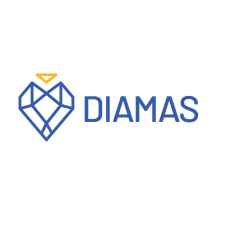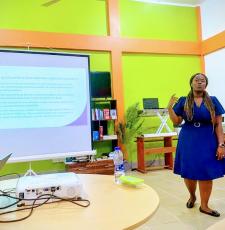
The Internet Governance Forum (IGF) 2022 took place from 28 November to 2 December 2022 in hybrid format, with remote participation online and in-person participation in Addis Ababa, Ethiopia. EIFL’s Ramune Petuchovaite reflects on shifts in debates at the Forum and highlights two reports that will be useful for policymakers working in the area of digital inclusion.
Welcoming delegates to the 17th IGF, the UN Secretary-General António Guterres called for the building of a human-centred digital future. This is the central idea of the ‘Global Digital Compact’, the UN’s proposed common digital principles and actions to accelerate the achievement of the Sustainable Development Goals.
The Global Digital Compact is expected to “outline shared principles for an open, free and secure digital future for all”. The Compact is currently open for public input by all stakeholders: governments, the UN system, the private sector, civil society, academia and individuals, until 31 March 2023. It should be agreed at the Summit of the Future in September 2024, and is likely to cover issues of digital connectivity, avoiding internet fragmentation, providing people with options as to how their data is used, application of human rights online, and promoting a trustworthy internet. You can submit your input here.
The IGF 2022 dialogue, guided by the Global Digital Compact, revolved around five sub-themes, including ‘Connecting All People and Safeguarding Human Rights’. However, this year, discussion on internet inclusion was less about connections (internet and devices) and more about capacity, meaningful information and use. And so I was happy to see libraries specifically mentioned in the description of this sub-theme.
Over the past decade, EIFL and IFLA (the International Federation of Library Associations and Institutions) have teamed up in the DC-PAL (Dynamic Coalition on Public Access in Libraries) to engage the IGF community in discussion on the good practices, networks and infrastructures offered by libraries to connect and empower communities in the digital world.
Libraries are well‑established actors in digital inclusion, and their impact goes far beyond providing internet access. Here I’d like to draw your attention to two research reports by DC-PAL partners that provide policy solutions for leveraging libraries’ potential in digital transformation, describe good practices in developing public access infrastructure in libraries, and through case studies and evaluation demonstrate the impact of public access in libraries.
Report - Libraries in national broadband plans and policies
The first report I want to highlight is one that will be useful for policy makers, government officials, library authorities and funders who are in the process of adopting new or updating national broadband policies and plans.
The Role of Libraries in National Broadband Plans and Policies (October 2021) examines national broadband plans and policies in 32 countries to understand how libraries roles are envisioned. We found that libraries roles were envisioned in four main ways -
- connecting vulnerable and underserved communities, and ensuring equitable access to e-government services through public access to computers and the internet in libraries;
- supporting demand for and usage of the internet through digital skills training in libraries and librarians’ consultations on digital content and other technology related matters;
- contributing to broader educational goals by facilitating e-learning, digital educational content and personalised learning;
- supporting creativity and multiculturalism through digitization and access to heritage resources, and creation of local digital content.
The report also highlights national strategies for supporting public libraries to fulfil these roles - from connecting libraries to broadband infrastructure, equipping them with ICT hardware and software, or helping them bear internet subscription costs. A number of plans rely on private-public partnerships and Universal Service Funds.
We also present case studies showing the impact of national broadband policy implementation on public internet access in libraries, and on library services, in five countries: Colombia, Kenya, Lithuania, Romania, and the Philippines. Each case study details how policy measures supporting public access have been implemented, the impact of the policy on libraries and communities, successes and lessons learned.
So, this report provides an in-depth knowledge on libraries' roles in national broadband policies and plans of other countries, and also allows learning from practical experience of developing and sustaining public access infrastructure in libraries.
Policy makers who are considering more comprehensive broadband strategies following the most recent recommendation of the Broadband Commission for Sustainable Development, “to ensure affordable access to universal meaningful connectivity, including subsidizing access to free or low-priced devices, as well as free connection in public administration facilities such as libraries, hospitals, or schools or at other public hotspots”, will find our research useful.
Report - Impacts of public access in libraries
Our second research report, Impacts of Public Access to Computers and the Internet in libraries (November 2022), will be useful for policy makers, government officials and library authorities, who have invested or are planning to invest in public access to computers and the internet in libraries.
To cater for different needs, report comprises two parts:
Firstly, the report summarizes and discusses findings of a selection of significant studies assessing the impacts and benefits of public access to computers and the internet in libraries, and answers six questions:
- Who are the users of public access in libraries? (Including which user groups tend to take advantage of public access services more often)
- How does the use of public access change over time?
- What do people use public access for? (Job-seeking and job application skills, study and education, personal communications, accessing news and information, etc.)
- What are the key outcomes of public access in libraries for users, non-users and the general public?
- How does public access transform libraries themselves? (Libraries use ICT in a wide range of learning opportunities in addition to providing digital skills training)
- What is the economic value of public access in libraries?
Secondly, the report describes methodologies and approaches used in assessing public access in libraries. Our aim is to provide a research toolbox / kit for evaluating the impact of public access in libraries, or in other public spaces (like cybercafes, telecentres, education centres), and to contribute to the IGF narrative on assessing internet connectivity solutions, reach and impacts.
This section is structured around evaluation of four aspects of public access in libraries – physical access to computers and internet; use and impacts of public access; public perceptions among non-users and general public, and the economic value generated by public access in libraries.
Find out more
- EIFL webinar, scheduled for early 2023, on broadband policies and impacts of public access in libraries. For details, watch our website / follow us on social media (Facebook, Twitter).
- The reports
- What happened at IGF 2022
SHARE / PRINT








